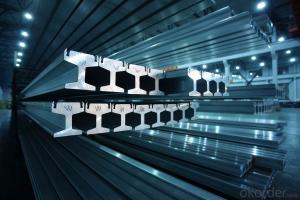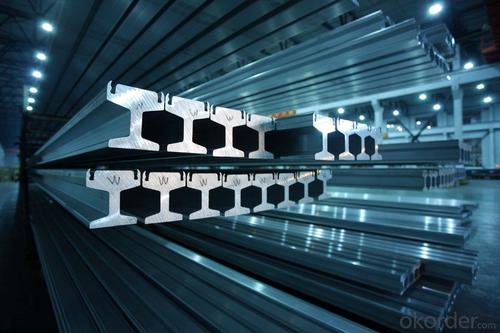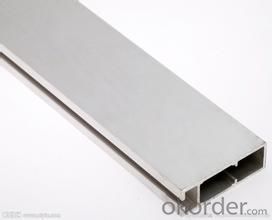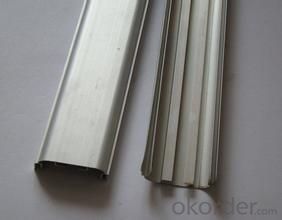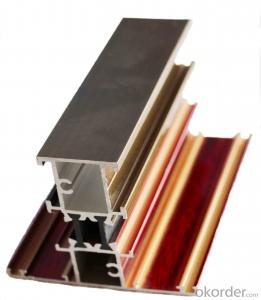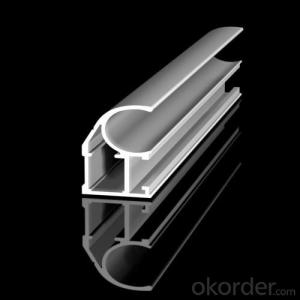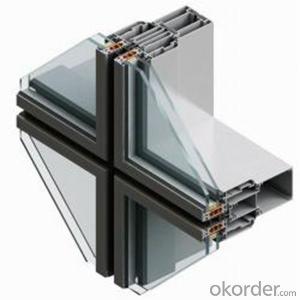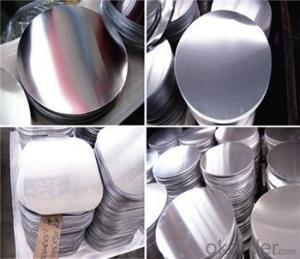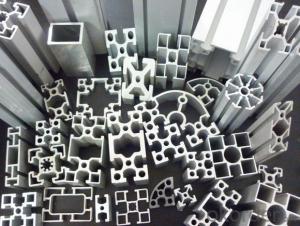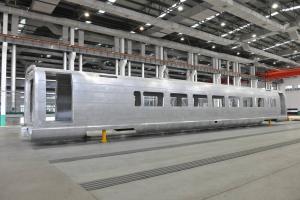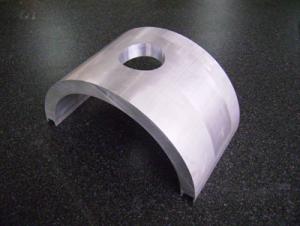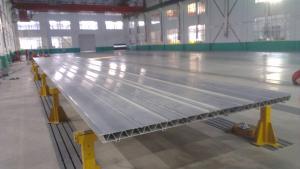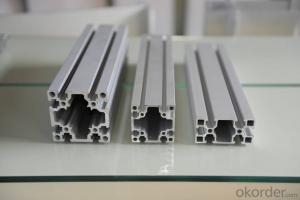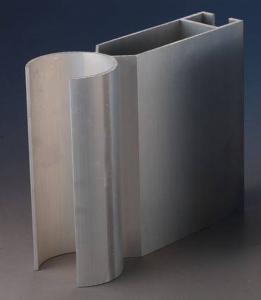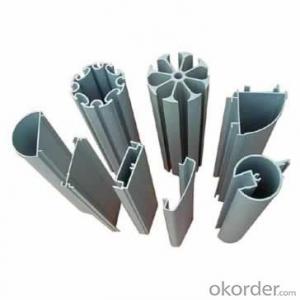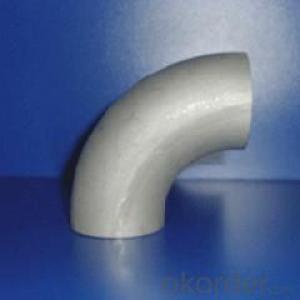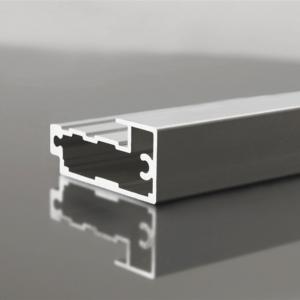Standard Extruded Aluminum Profiles for Making Ship Masts
- Loading Port:
- Shanghai
- Payment Terms:
- TT OR LC
- Min Order Qty:
- 5 m.t.
- Supply Capability:
- 1000 m.t./month
OKorder Service Pledge
OKorder Financial Service
You Might Also Like
Specification
1. Structure of Aluminium Extrusions for making Ship Mast Description
Aluminium Extrusions for making Ship Mast is one semi-finished aluminium material. The alloy AA6082 T6 is widly used in building, industry ect. Its weight is much lower than steel. So many customers choosed aluminium material instead of steel.
2. Specification of Aluminium Extrusions for making Ship Mast
Aluminum Extrusion | |
Main Specification | |
Alloy | AA1xxx (AA1050, AA1060, AA1070, AA1100 etc.) |
AA3xxx (AA3003, AA3004, AA3005, AA3105 etc.) | |
AA5xxx, AA6XXX (AA5052,AA5083, AA5754, AA6061, AA6062 etc.) | |
AA8xxx(AA8011, AA8006 etc.) | |
Temper | H14,H16, H18, H22, H24, H26, H32,O/F, T4, T6, T651 |
Thickmess | 0.01mm-100mm |
Width | 30mm-1700mm |
Standard | GB/T 3880-2006/ASTM |
Special specification is available on customer's requirement | |
3. Application of Aluminium Extrusions for making Ship Mast
(1).Interior: wall cladding, ceilings, bathrooms, kitchens and balconies, shutters, doors...
(2).Exterior: wall cladding, facades, roofing, canopies, tunnels,column covers , renovations...
(3).Advertisement: display platforms, signboards, fascia, shop fronts...
4. Feature of Aluminium Extrusions for making Ship Mast
Surfact Quality :
Be free from Oil Stain, Dent, Inclusion, Scratches, Stain, Oxide Dicoloration, Breaks, Corrosion, Roll Marks, Dirt Streaks and other defect which will interfere with use,
Mechenical Property:
Chemical Composite and Mechanical Property
5. Certificate of Aluminium Extrusions for making Ship Mast
SGS and ROHS(if client request, paid by client), MTC(plant provided), Certificate of Origin(FORM A, FORM E, CO), Bureau Veritas and SGS (if client request, paid by client), CIQS certificate
6. Image of Aluminium Extrusions for making Ship Mast
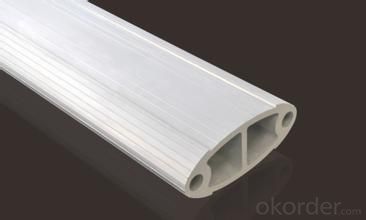
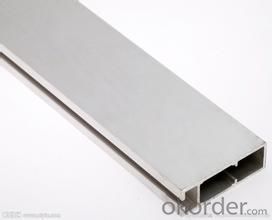

7. Package and shipping of Aluminium Extrusions for making Ship Mast
First, plastic cloth with drying agent inside; Second, Pearl Wool ; Third, wooden cases with dry agent , fumigation wooden pallets, aluminum surface could cover blue PVC film
8. FAQ
1) What is the delivery time?
Depends on actual order, around 20 to 35 days
2) What is the QC system:
We have QC staff of 20 persons and advanced equipment, each production is with MTC traced from Aluminum ingot lot.
3) What market do you mainly sell to?
Australia, America, Asia, Middle East, Western Europe, Africa etc
- Q: Is it possible to recycle aluminum profiles and what are the benefits of doing so?
- <p>Yes, aluminum profiles can be recycled. Recycling aluminum is energy-efficient, as it requires only 5% of the energy needed to produce new aluminum from raw materials. This process reduces greenhouse gas emissions and conserves natural resources. Recycled aluminum maintains its quality, making it suitable for various applications, including construction, automotive, and consumer goods. Proper recycling also helps to reduce landfill waste and promotes a circular economy.</p>
- Q: Can aluminum profiles be utilized as materials for constructing roofs?
- <p>Yes, aluminum profiles can be used for roofing materials. They are known for their durability, corrosion resistance, and lightweight properties, making them an excellent choice for roofing applications. Aluminum profiles can be shaped and joined to create a strong and weather-resistant roofing system. They are also easy to install and maintain, and can be recycled, contributing to their environmental sustainability.</p>
- Q: in addition to the groove width is not the same as other well differentiated? Is there any difference in wall thickness?
- There must be a difference. There is a distinction between rice weight and wall thickness. For example, Jing Teng Aluminum CompanyJT-8-5050W meters weight is 3.25KG,,JT-10-5050 meters weight is 2.95KG. Specific parameters, you can go to consult the next business
- Q: 5002 and 6063 aluminum profiles difference
- Sometimes, a small amount of copper or zinc is added to improve the strength of the alloy, while the strength of the alloy is increasedAnd the corrosion resistance decreased significantly; there is a small amount of copper conductive materials, titanium and iron in order to offset the adverse effects on the conductivity of the zirconium or titanium; recrystallization grain refinement and control; in order to improve the cutting performance, can be addedLead and bismuth. In Mg2Si, Mg/SiWhen the ratio is 1.73, in the heat treatment state, the Mg2Si is melted in aluminum, and the alloy has the artificial aging hardening function.
- Q: we recently entered a batch of aluminum billet, under the rain, billet oxidation, spray finished drawing after the profile off the skin, how to do
- Before treatment, not dealt with, must be dealt with before spraying, this situation.
- Q: Changhe brand aluminum can?
- Profile is not bad, but visibility is not too large, the whole is still very good, cost-effective
- Q: Can aluminum profiles be used for furniture?
- Yes, aluminum profiles can be used for furniture. Aluminum is a versatile and lightweight material that is commonly used in the construction of furniture. It offers several advantages, such as being corrosion-resistant, durable, and easy to clean. Aluminum profiles can be used to create various types of furniture, including tables, chairs, shelves, and cabinets. The profiles can be easily customized and shaped to fit specific design requirements. Additionally, aluminum profiles can be powder-coated or anodized to provide a decorative and long-lasting finish. Overall, aluminum profiles are a popular choice for furniture due to their strength, versatility, and aesthetic appeal.
- Q: The question asks if aluminum profiles can be tailored to fit particular specifications or needs.
- <p>Yes, aluminum profiles can be customized to meet specific requirements. This customization can include altering the length, shape, thickness, and surface treatment of the profiles to fit the needs of various applications. Manufacturers often offer a range of standard sizes and finishes, but they can also create bespoke profiles through processes like extrusion, cutting, and bending. Customization allows for the creation of precise fits and functional designs tailored to individual projects, enhancing both aesthetics and performance.</p>
- Q: Are aluminum profiles suitable for electrical grounding applications?
- Yes, aluminum profiles are suitable for electrical grounding applications. Aluminum is a highly conductive material, which means it can effectively carry electrical currents and dissipate any potential electrical charges. Aluminum profiles are commonly used in various electrical grounding systems, such as grounding bars, busbars, and grounding conductors. They provide a reliable and durable solution for creating a low-resistance path for electrical currents to flow safely to the ground. Additionally, aluminum profiles have excellent corrosion resistance properties, which further enhances their suitability for grounding applications in both indoor and outdoor environments.
- Q: What are the differences between aluminium profiles 6063 and 6463?
- 6063 aluminum introduction: Standard: GB/T 3191-1998, commodity name: 6063 aluminum bar, 6063 aluminum alloy bar.6063 aluminum alloy is a moderate strength heat treatment alloy in AL-Mg-Si system.
Send your message to us
Standard Extruded Aluminum Profiles for Making Ship Masts
- Loading Port:
- Shanghai
- Payment Terms:
- TT OR LC
- Min Order Qty:
- 5 m.t.
- Supply Capability:
- 1000 m.t./month
OKorder Service Pledge
OKorder Financial Service
Similar products
Hot products
Hot Searches
Related keywords
